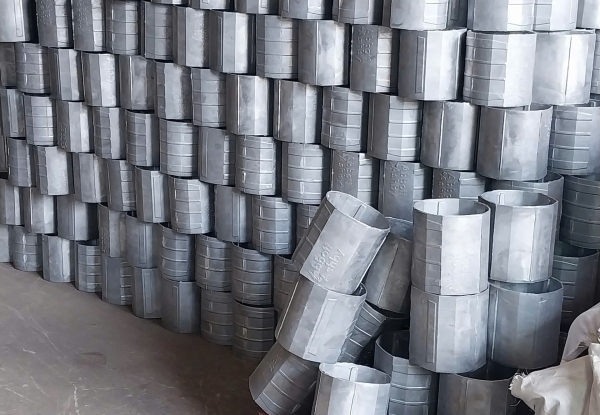Pressure Die Casting (Die Casting) has two main types: Single Cavity Die Casting and Multiple Cavity Die Casting. Below is a brief description of each type:
1. Single Cavity Die Casting:
In this method, each mold produces only one product per die casting cycle. After molten metal is forced into the mold, the final product is formed. Once the casting process is complete and the product is removed from the mold, a new casting cycle can begin. Single cavity die casting is suitable for producing individual items or a small quantity of products at a time.

2. Multiple Cavity Die Casting:
Unlike single cavity die casting, multiple cavity die casting allows the production of several products simultaneously in each die casting cycle. The mold in this method is designed with multiple cavities, each corresponding to one product. When molten metal is forced into the mold, multiple products are formed at the same time. This method is an efficient way to mass-produce products with the same shape and size.
Both types of die casting are used in the manufacturing industry to produce products with high precision and superior quality. Depending on the production scale and specific requirements, manufacturers can choose the appropriate die casting method to meet their production needs.

The die casting process is typically performed with metals that have high melting points, such as aluminum, zinc, magnesium, copper, and metal alloys. Below is a description of some commonly used materials in die casting:
Aluminum: Aluminum is one of the most commonly used materials in die casting. It offers many advantages such as lightweight, easy machinability, corrosion resistance, and good thermal conductivity. Aluminum die casting typically produces products with smooth surfaces and high quality.
Zinc: Zinc is also a popular material in die casting, especially for producing small and complex components. It provides high detail accuracy, durability, and good corrosion resistance.
Magnesium: Magnesium is a lightweight and high-strength material, suitable for applications that require low weight, such as in the aerospace and automotive industries. However, magnesium die casting requires strict temperature and pressure control because magnesium is flammable during casting.
Copper: Copper is an easily machinable material with good thermal conductivity. Die-cast copper is often used in applications requiring high strength and electrical conductivity.
Metal Alloys: In addition to the materials mentioned above, die casting also uses metal alloys such as aluminum alloys, zinc alloys, magnesium alloys, and copper alloys to produce a variety of products with specialized properties and performance.
The selection of the appropriate material for die casting depends on product requirements, including strength, weight, thermal conductivity, machinability, and the intended final application. Manufacturers usually conduct testing and research to ensure that the chosen material meets technical requirements and quality standards.
